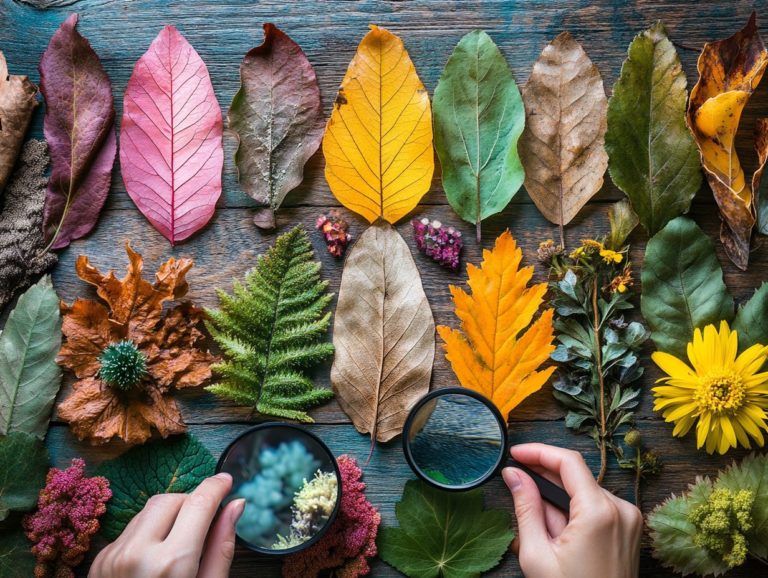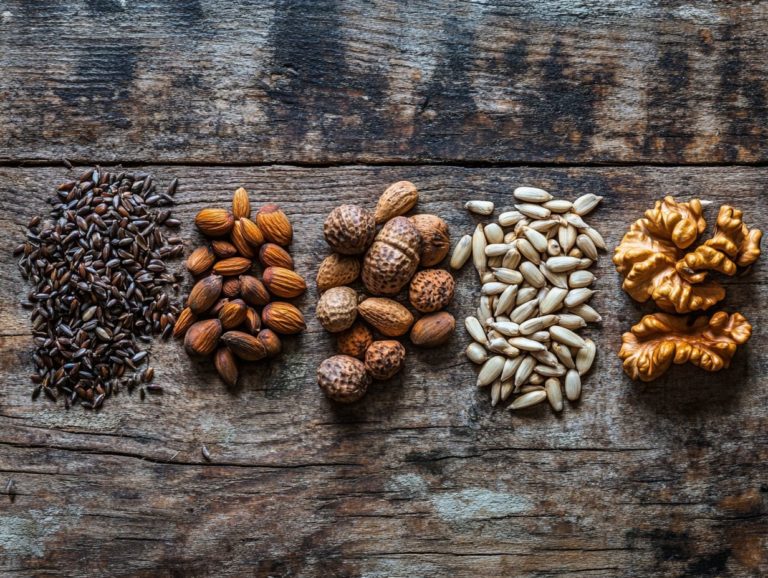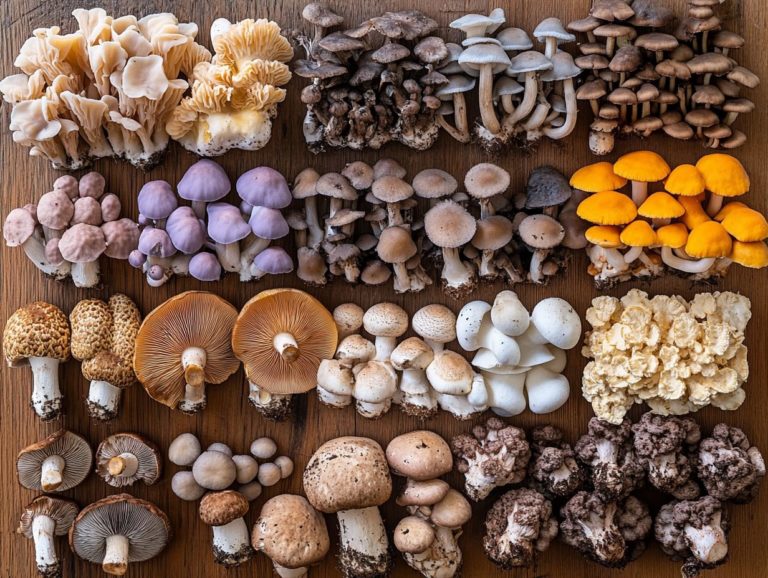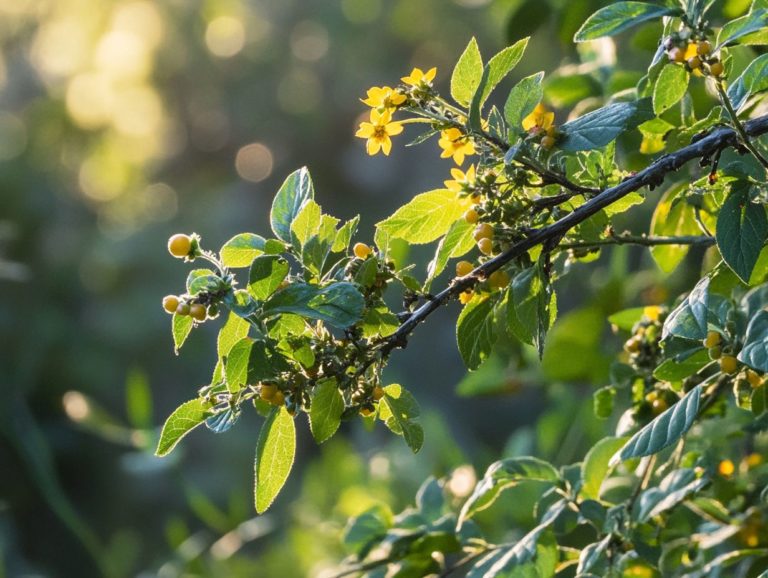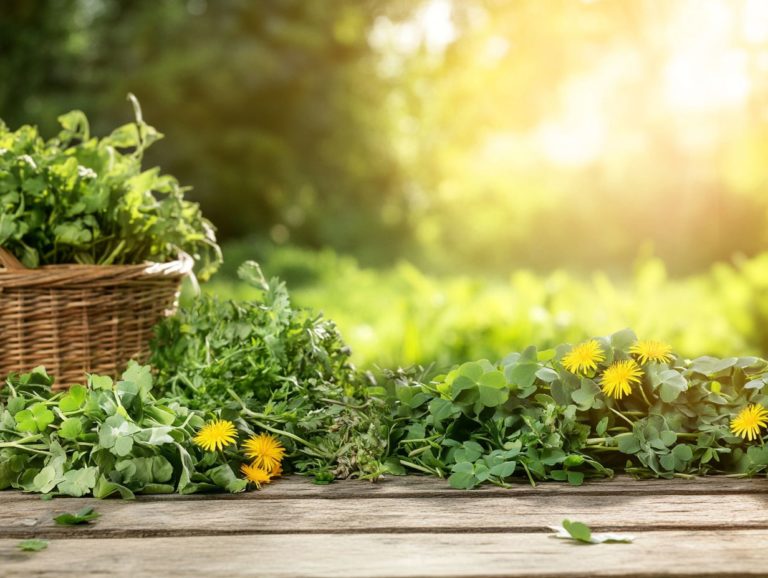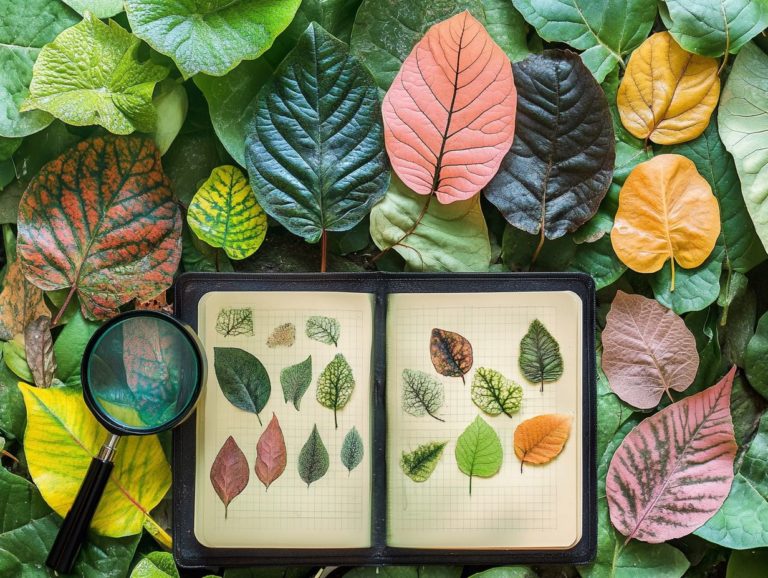How to Identify Edible Plants in Spring
Foraging for wild edible plants offers a rewarding adventure, allowing you to connect deeply with nature while honing your culinary skills.
This article delves into the numerous benefits of foraging, presenting essential guidelines to help you identify and safely harvest edible plants. You ll also find tips for recognizing them by their distinctive appearances.
This article highlights spring-specific plants that are ideal for your kitchen and shares methods and recipes that will elevate your culinary creations.
Whether you re a seasoned forager or just beginning your journey, you ll find valuable insights waiting for you!
Contents
- Key Takeaways:
- General Guidelines for Identifying Edible Plants
- Identifying Edible Plants by Appearance
- Edible Plants by Season
- Preparation and Cooking of Edible Plants
- Frequently Asked Questions
- How do I identify edible plants in spring?
- What are the best ways to learn about edible plants in spring?
- How can I be sure a plant is safe to eat in spring?
- What are some common edible plants that grow in spring and are easy to identify?
- How do I avoid confusing edible plants with toxic ones in spring?
- Can I forage for edible plants in spring without harming the environment?
Key Takeaways:
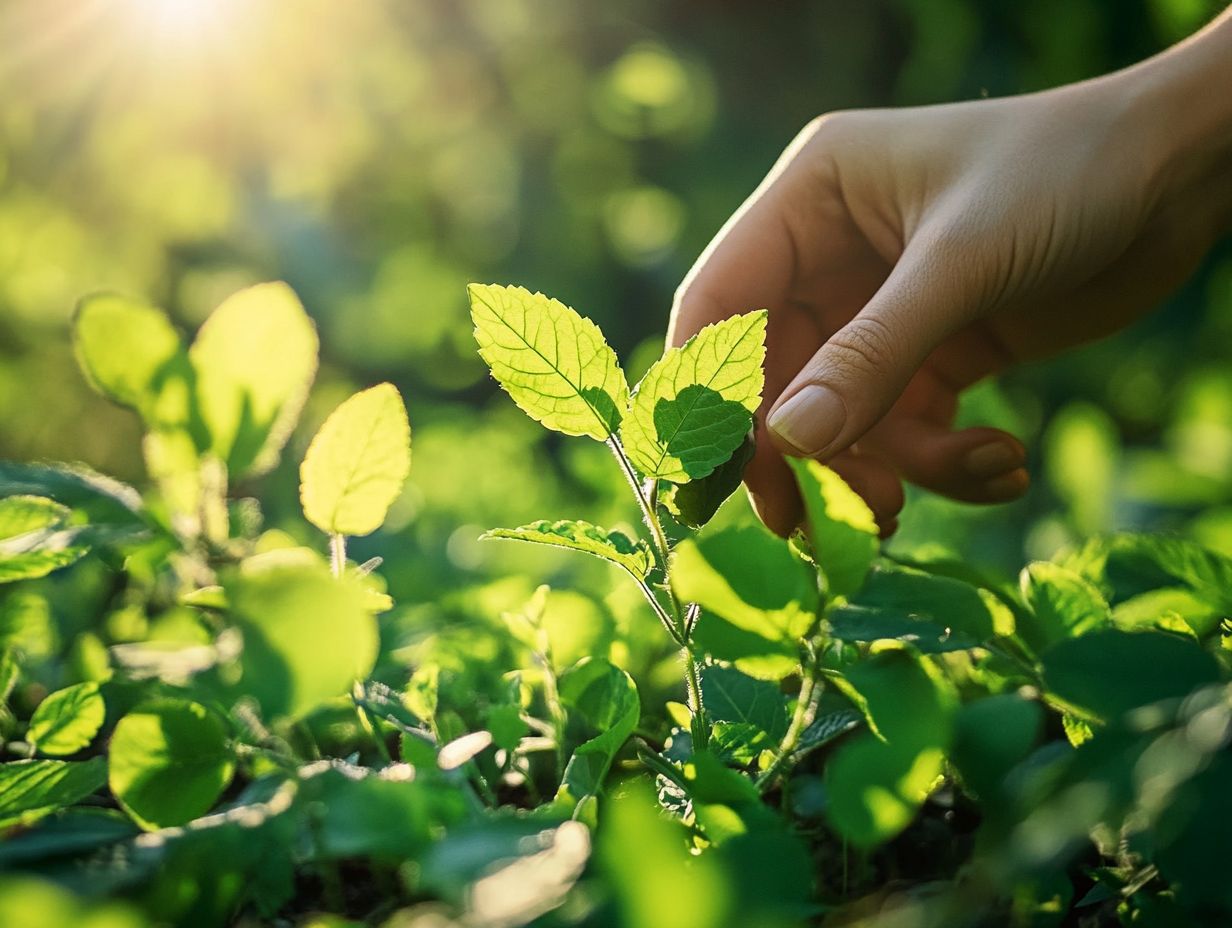
- Always follow basic safety precautions and guidelines when identifying and consuming wild edible plants.
- Look for specific characteristics such as color, shape, and texture to identify edible plants in spring.
- Proper preparation and cooking methods are crucial for safely consuming wild edible plants. Try new recipes to enhance your foraging experience.
Benefits of Foraging for Wild Edible Plants
Foraging for wild edible plants during the vibrant spring season presents a multitude of benefits. It enhances your health and deepens your connection with nature.
Foraging grants you access to fresh salad greens and nutrient-dense options like dandelion greens, stinging nettle, and miner s lettuce. It also promotes sustainable practices that help protect the environment and ensure resources for future generations.
Engaging in foraging adventures not only enriches your understanding of the ecosystem but also introduces unique flavors into your meals. You can also discover medicinal plants that contribute to holistic health, which considers the whole person body, mind, and spirit.
This practice aligns beautifully with the philosophy of new beginnings that spring embodies, inspiring you to explore your surroundings.
Not only does foraging enrich your diet with antioxidants and vital minerals, but it also unveils lesser-known edible treasures such as wild garlic, ramps, and wood sorrel. Each is brimming with distinct culinary possibilities.
By sourcing food locally, you actively contribute to environmental sustainability and reduce your carbon footprint while supporting the local ecosystem. The act of foraging can be a joyful and meditative journey, igniting your curiosity and appreciation for nature s wonders.
As you learn to identify and responsibly harvest these plants, you become more aware of your surroundings. This fosters a sense of stewardship that is essential in today s world.
General Guidelines for Identifying Edible Plants
Identifying edible plants is an essential skill for anyone venturing into the world of foraging. Learning how to identify wild edibles during fall not only ensures your safety but also enhances your experience in discovering nature’s wild bounty.
When foraging in spring, familiarize yourself with the distinguishing features of various species. Additionally, knowing how to identify edible plants in winter can enhance your foraging skills. Look for wildflowers, tender shoots, and fragrant wild garlic, while being mindful of potential look-alikes that may be harmful.
A reliable guidebook can be your best ally in recognizing delicious mushrooms like morels and chicken of the woods. This helps you differentiate them from their toxic counterparts.
It s also important to keep in mind the seasonal availability of plants, as each species flourishes at different times throughout the year.
Basic Rules and Safety Precautions
When you embark on a foraging adventure, practice sustainable foraging: take only what you need and leave enough for wildlife and future growth. Adhering to basic rules and safety precautions is essential for a safe and enjoyable experience while gathering wild edible plants.
Having a solid understanding of your surroundings can dramatically influence your foraging success. By grasping the nuances of local ecosystems, you ll be better equipped to locate edible varieties and steer clear of toxic look-alikes like hemlock or other perilous flora.
Be mindful of any legalities that may govern foraging in your area, as certain regions impose restrictions on harvesting specific species or foraging in protected lands. Ultimately, being well-informed not only enriches your experience but also fosters responsible conservation practices.
Identifying Edible Plants by Appearance
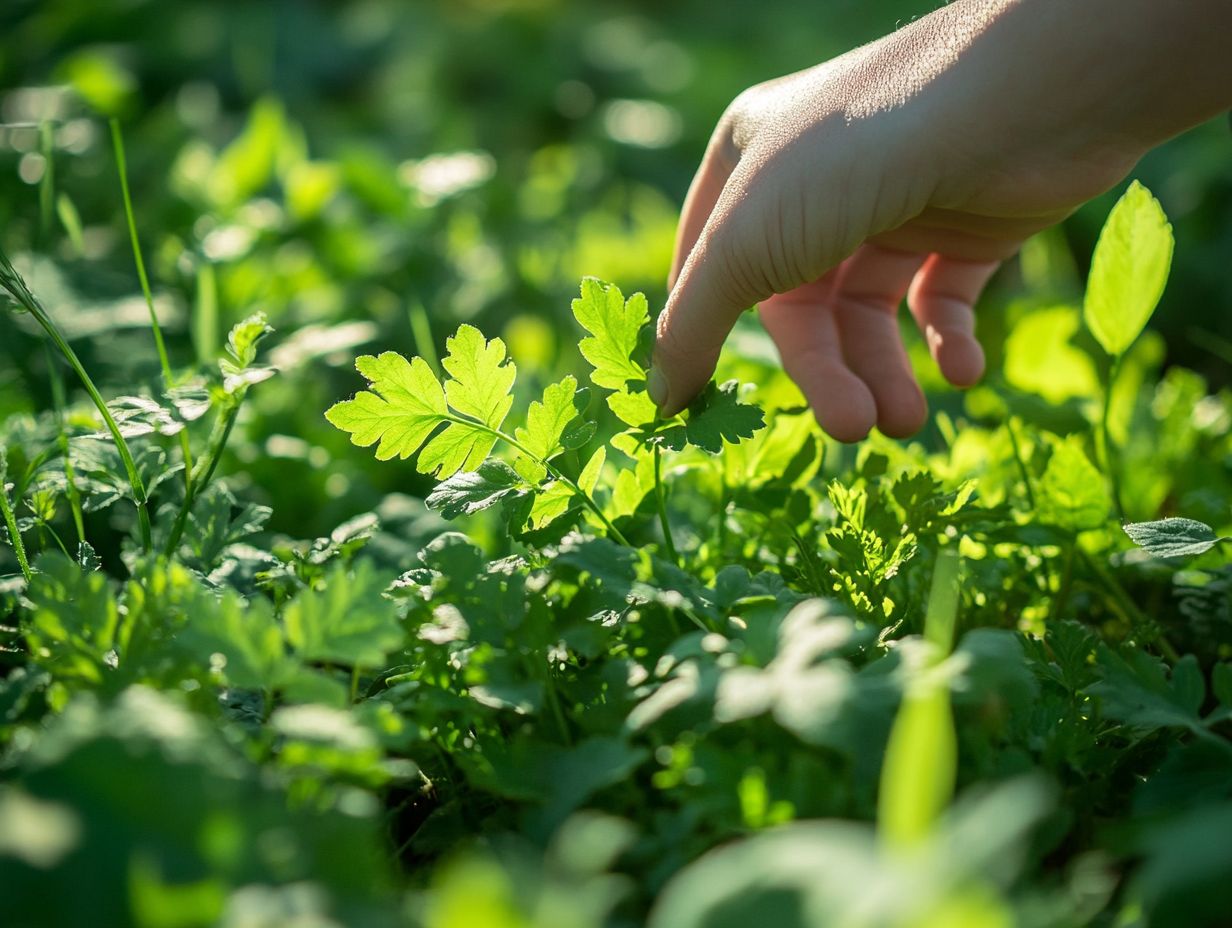
Identifying edible plants by appearance is essential for foragers. Knowing their physical traits is crucial, and resources like identifying edible plants along trails can help you gather safe, nutrient-rich wild foods.
For example, you can recognize stinging nettle by its serrated leaves and hollow stems. Wild violet showcases heart-shaped leaves and vibrant purple blooms. Garlic mustard presents a distinctive rosette of leaves that stands out early in the season.
Familiarizing yourself with these visual traits boosts your foraging confidence and enriches your experience of connecting with nature’s bounty.
Characteristics to Look For
As you forage for edible plants, spotting key characteristics like color, shape, and growth habits is crucial. This will help you tell what s safe to eat and what to avoid.
Take those young shoots that pop up in spring; they can be tender and nutrient-rich, a true delight. Morel mushrooms, with their honeycomb appearance and unique cap shapes, are another tasty find.
Identifying wild asparagus is simple: look for its spear-like structure and earthy aroma, clear indicators that it s ready for your plate. Paying attention to these details deepens your connection with the natural world.
Keep an eye out for plants with distinctive leaf patterns. The broad, heart-shaped leaves of plantain are easily recognizable and packed with vitamins and minerals. That deep green hue often signals freshness and nutritional value.
Don’t overlook the vibrant purple of elderberry flowers; they indicate that the plant is not just edible but can also be transformed into delightful syrups or jams. By honing in on these visual cues and textures like the silky touch of lamb’s ear leaves you can cultivate a rich understanding of your local ecosystem and confidently uncover edible treasures in the wild.
Edible Plants by Season
Understanding which edible plants are in season is essential for foraging success, especially in spring. This season brings a vibrant selection of wild foods, including morel mushrooms and stinging nettle, bursting forth from the earth. To enhance your foraging skills, learn how to spot edible plants in the wild.
During this time, discover nutrient-rich greens such as dandelion and miner’s lettuce. You’ll also find colorful flowers and herbs that elevate your meals. Learning how to identify safe wild edibles, like the unmistakable scent and broad leaves of wild garlic, makes it a fantastic addition to your spring dishes.
The tender shoots of wild asparagus are a cherished seasonal treat. Being aware of these seasonal treasures enriches your culinary adventures.
Spring-Specific Plants to Look For
Among the myriad of plants that spring to life, a select few shine for those in search of fresh, edible delights. Learning about identifying edible plants in your region can enhance your foraging experience.
As you wander through the vibrant tapestry of flora, keep an eye out for the tender shoots of fiddlehead ferns. These delicate wonders can be saut ed or steamed to create a delectable veggie side dish that will elevate any meal.
Then there are the dandelion greens, often dismissed as mere weeds, yet they offer a bitter yet nourishing kick to your salads and smoothies. Don’t overlook the aromatic wild garlic; it can be used just like its cultivated cousin, imparting a bold flavor to a variety of dishes.
Each of these springtime plants delights the palate and provides a wealth of nutrition, making them superb choices for anyone eager to enhance their culinary skills.
So, grab your basket and dive into the wild! Discover delightful edibles for your next culinary adventure!
Preparation and Cooking of Edible Plants
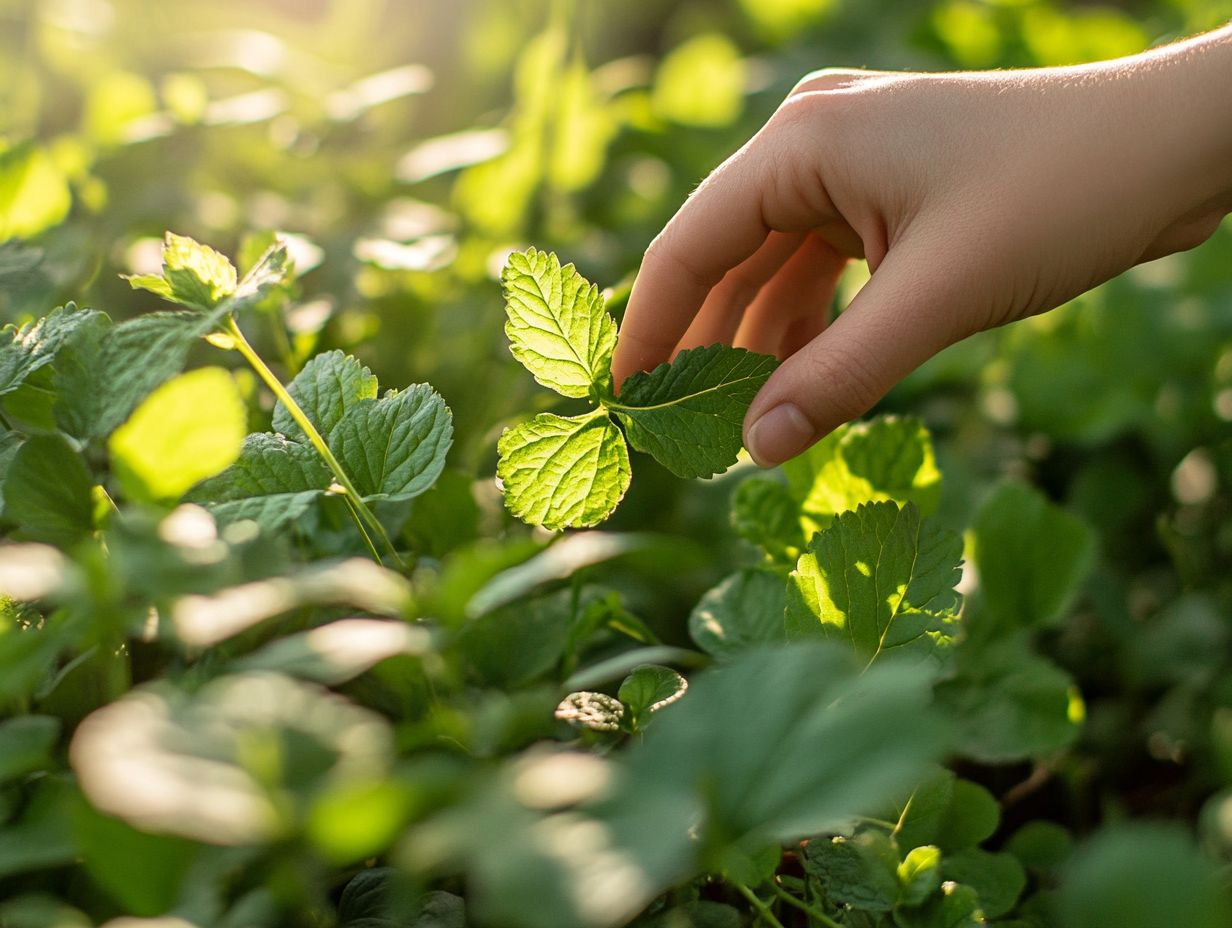
Preparing and cooking wild edible plants demands a thoughtful approach to ensure both safety and flavor. This includes creating an herbal salve or a vibrant pesto that showcases your foraged finds.
Techniques can range from straightforward tasks like washing and chopping to more sophisticated culinary applications, such as crafting a vibrant pesto or an herbal salve using your foraged ingredients.
For example, dandelion greens transform beautifully when saut ed or tossed into salads. Mushrooms like morels require careful washing and cooking to ensure they are safe to enjoy.
By mastering these preparation methods, you maximize your enjoyment of wild edibles and embrace the ethos of using sustainable, local ingredients in your culinary adventures.
Methods and Recipes for Safe Consumption
Developing methods and recipes for the safe consumption of wild foods is essential for anyone looking to weave these ingredients into their diet. Understanding the seasonal availability and regional varieties is crucial; this knowledge can ignite your creativity in the kitchen.
Don t miss out on exploring exciting creations like acorn flour pancakes or infused wild herbal teas. By experimenting with preparation techniques like blanching (briefly boiling to preserve flavor) or fermentation (using natural bacteria to preserve food), you ensure safety while unlocking unique flavors and textures.
Embracing wild edibles transforms your everyday meals into extraordinary culinary adventures, making your foraging journey both delicious and rewarding.
Frequently Asked Questions
How do I identify edible plants in spring?
To identify edible plants in spring, learn about the different characteristics of these plants, such as their appearance, scent, and taste. Consulting a field guide or taking a foraging class can be invaluable, especially when identifying edible plants in spring in your area.
What are the best ways to learn about edible plants in spring?
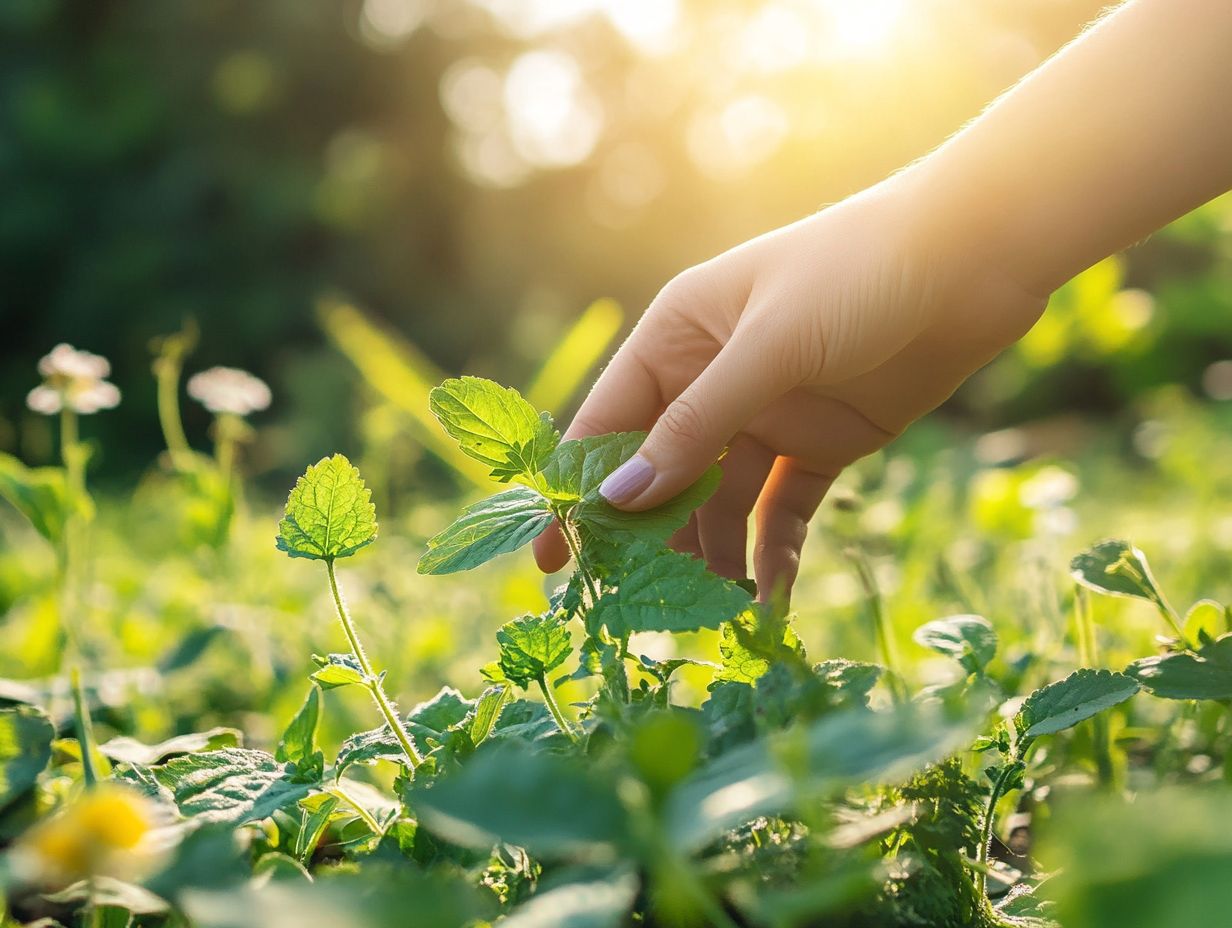
One of the best ways to learn about edible plants in spring is to go on a guided foraging tour with an experienced forager. Additionally, you can explore seasonal edibles to forage in spring, attend workshops, read books and online resources, or join local foraging groups to learn from others.
How can I be sure a plant is safe to eat in spring?
Always double-check the identification of a plant before consuming it. Cross-reference with multiple reliable sources, consult an expert, or perform a taste test on a small portion of the plant.
What are some common edible plants that grow in spring and are easy to identify?
Some common edible plants that grow in spring include dandelion, wild garlic, fiddleheads, ramps, chickweed, and stinging nettle. However, the types of edible plants vary depending on your location, so it’s important to research how to identify edible plants in the wild specific to your area.
How do I avoid confusing edible plants with toxic ones in spring?
To avoid confusion, properly identify the plant before consuming it. Look for distinct characteristics, such as the shape and color of leaves, and consult a reliable source. If you are unsure, it’s best to err on the side of caution and avoid consuming the plant.
Can I forage for edible plants in spring without harming the environment?
Yes, you can forage for edible plants in spring without harming the environment. Take small amounts of each plant, avoid disturbing the roots, and be mindful of the plants and their surroundings. For more information on this topic, check out identifying edible plants in the Northeast. It’s also important to forage in areas not sprayed with chemicals or pollutants.
Join a local foraging group today to discover the delicious world of edible plants!

